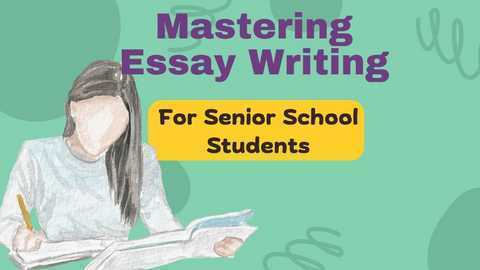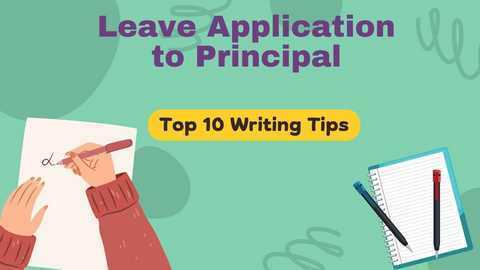How to effectively write introduction of an essay?
The introduction is one of the most critical elements of any essay, as it sets the tone for the rest of the paper and hooks the reader’s attention.
As such, it is essential to write a strong and effective introduction that captures the reader’s interest and provides an overview of the essay’s main argument.
In this article, we will discuss the top 10 advanced tips with practical example on how to write an essay introduction that will leave a lasting impression on the reader.
How to Write an Essay Introduction | 10 Best Tips
1. Start with a hook
A hook is a sentence or phrase that grabs the reader’s attention and entices them to keep reading.
It can take many forms, including a surprising fact, a thought-provoking question, or a vivid description of a scene or event.
The goal of the hook is to make the reader curious about what the essay has to say and to encourage them to read on.
To create a hook that works, consider the subject matter of the essay and try to come up with a creative and attention-grabbing angle.
For example, if you are writing an essay about the effects of climate change, you might start with a surprising statistic, such as “Did you know that the earth has warmed by 1.5 degrees Fahrenheit in the last century?”
This will grab the reader’s attention and encourage them to read on to learn more.
2. Provide context for the essay introduction
Once you have hooked the reader, the next step is to provide some context for the essay introduction.
This can include a brief overview of the topic, an explanation of the essay’s purpose, or a historical or cultural background that is relevant to the subject matter.
By providing context, you give the reader a better understanding of what they can expect from the essay and why it is important.
It also helps to set the tone for the rest of the paper and creates a sense of coherence and structure.
For example, if you are writing an essay about the history of the American Civil War, you might provide some context by explaining the causes of the war and the political and social tensions that led up to it.
This will help the reader to understand why the topic is important and what they can expect from the essay.
3. State the thesis
The thesis statement is the central argument of the essay, and it should be stated clearly and concisely in the introduction.
The thesis statement provides the reader with a roadmap of the essay and lets them know what to expect from the rest of the paper.
To write a strong thesis statement, it is important to be clear and specific about the argument you are making.
Avoid vague or broad statements that are difficult to support with evidence.
Instead, focus on a specific claim that can be supported with evidence from the rest of the essay.
For example, if you are writing an essay about the effects of social media on mental health, your thesis statement might be, “Social media use is associated with increased levels of anxiety and depression in young people.”
This statement is clear and specific, and it can be supported with evidence from the rest of the essay.
4. Use transitions in introduction of an essay
Transitions are words or phrases that connect different parts of the essay and help to create a sense of flow and coherence.
They are especially important in the introduction, where they can help to connect the hook, the context, and the thesis statement.
To use transitions effectively, it is important to choose words or phrases that are appropriate for the context and that create a sense of logical progression.
Some examples of transitional words and phrases include “furthermore,” “in addition,” “moreover,” “on the other hand,” and “in contrast.”
For example, you might use the transitional phrase “in addition” to connect the hook and the context in the introduction of an essay about climate change.
You could say, “In addition to being one of the most pressing issues of our time, climate change is also one of the most complex and multifaceted.”
This transitional phrase helps to bridge the gap between the attention-grabbing hook and the context that provides a more detailed overview of the topic.
5. Keep it concise and focused
While it is important to provide enough information in the introduction to give the reader a sense of what the essay is about, it is also important to keep the introduction concise and focused.
This means avoiding unnecessary details or tangents that can distract from the main argument.
To keep the introduction focused, it is important to be clear about the purpose of the essay and to stick to the central argument.
This means avoiding irrelevant information or background that is not directly related to the topic.
6. Use an anecdote or personal story in the essay introduction
Anecdotes and personal stories can be effective ways to draw in the reader and make a connection between the topic of the essay and the reader’s own experiences.
By sharing a personal experience or story, the writer can establish credibility and build a relationship with the reader.
For example, if you are writing an essay about the importance of diversity in education, you might start with a personal story about how diversity has impacted your own education.
You could say, “As a student in a diverse public school, I have witnessed firsthand the benefits of learning alongside students from different cultural backgrounds.
This experience has taught me the value of diversity in education and the need for more inclusive classrooms.”
7. Pose a provocative question or challenge a common assumption
Another effective way to engage the reader is to pose a provocative question or challenge a commonly held assumption.
This can encourage the reader to think critically and engage with the topic in a new and interesting way.
For example, if you are writing an essay about the ethics of animal testing, you might start with a provocative question such as, “Is it ever ethical to use animals for scientific research?”
This question challenges the assumption that animal testing is a necessary and acceptable practice and encourages the reader to consider the issue from a different perspective.
8. Provide a relevant quote or cite a relevant source
Quoting a well-known person or citing a relevant source can be an effective way to grab the reader’s attention and establish the credibility of the argument.
This can also help to situate the topic within a larger conversation or debate.
For example, if you are writing an essay about the importance of civic engagement, you might start with a quote from a famous civil rights leader such as Martin Luther King Jr.
You could say, “As Martin Luther King Jr. once said, ‘Our lives begin to end the day we become silent about things that matter.’
This quote highlights the importance of speaking out and taking action to promote positive change, and it sets the tone for the rest of the essay.”
9. Use a relevant cultural or historical reference
Using a cultural or historical reference can be a powerful way to make a connection with readers and contextualize the topic.
This can also help to establish the credibility of the writer and demonstrate their understanding of history and culture.
For example, if you are writing an essay about the impact of globalization on Indian culture, you might start with a historical reference to the British colonial period.
You could say, “India has a rich and complex cultural history that has been shaped by centuries of colonization, independence struggles, and globalization.
Understanding this history is essential to understanding the impact that globalization has had on Indian culture.”
10. Address the reader directly and personalize the topic
Addressing the reader directly and personalizing the topic can be an effective way to engage readers and make the topic more relevant to their lives.
This can also create a sense of intimacy and familiarity that can help to build a relationship between the writer and the reader.
For example, if you are writing an essay about the benefits of yoga, you might start by addressing the reader directly and personalizing the topic.
You could say, “Are you feeling stressed and overwhelmed by the demands of modern life? If so, you are not alone.
Many people in India are turning to yoga as a way to cope with stress and improve their overall well-being.
In this essay, we will explore the many benefits of yoga and why it has become such an important part of Indian culture.”
Conclusion
Writing a strong and effective essay introduction is a key part of writing a successful essay.
By following these top 10 advanced tips, writers can create introductions that are both engaging and relevant to their audience.
Remember to keep the introduction concise and to the point, and to revise and refine it as needed to ensure that it sets the tone for the rest of the essay.
With a strong introduction, you can capture the reader’s attention and lay the groundwork for a successful and impactful essay.
It is also important to remember that there is no one-size-fits-all approach to writing an essay introduction, and writers should experiment with different techniques and strategies to find what works best for them and their audience.
With practice and persistence, writers can develop their skills and create introductions that are not only effective but also enjoyable to read.




![How to Write Leave Application for Office [8 Practical Tips]](/wp-content/uploads/2023/02/How-to-Write-Leave-letter-for-office.jpg)